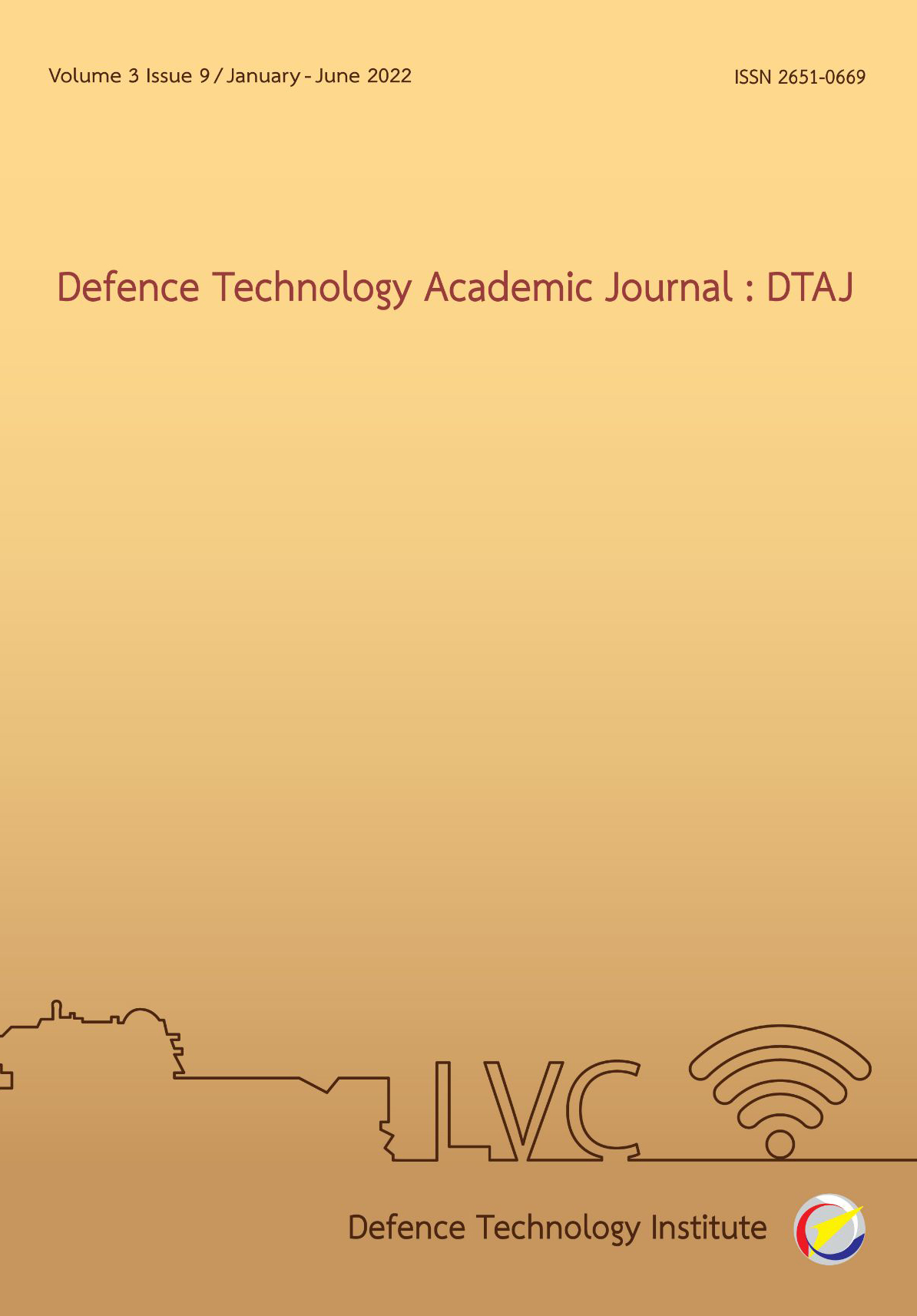Analyzing Geoffrey Till’s Post Modern Navy Enabler of Defence Industry An Assessment of Leading Naval Industries in ASEAN
Main Article Content
Abstract
This article has three primary objectives. First, it attempts to revisit the analytical framework of Modern Navy and Post-Modern Navy offered by Geoffrey Till, the author of Seapower: A Guide for the Twenty-First Century. Second, it focuses on the enablers of the defence industry, especially the naval component, of Malaysia, Singapore, and Indonesia. Third, from studying the abovementioned navies, it outlines some policy recommendations for naval modernization in Thailand. It uses the SWOT method to assess the country’s overall industrial capability and opportunity. The source of these data derives from various academic works, online news and database, research and dissertations, all of which are academic open sources and are entirely not confidential. The sequence of this analysis stems from the theoretical framework of modern and post-modern navy and the next section is followed by proposing a thesis statement on an enabler of defence industry. This article uses this enabler to analyze the naval industries consecutively and comparatively. Then, it forecasts the trends of naval technology and business for the future. Some policy recommendations and organizational directions for Royal Thai Navy’s force modernization are discussed as potential outcomes of this research.
Downloads
Article Details

This work is licensed under a Creative Commons Attribution-NonCommercial-NoDerivatives 4.0 International License.
Journal of TCI is licensed under a Creative Commons Attribution-NonCommercial-NoDerivatives 4.0 International (CC BY-NC-ND 4.0) licence, unless otherwise stated. Please read our Policies page for more information...
References
Geoffrey Till, “Seapower in a Globalised World: Two Tendencies,” in Seapower : A Guide for the Twenty-First Century, 2nd ed. New York, NY, USA: Routledge, 2009, pp. 1-17.
U.S. Chamber of Commerce. “Q&A on “Buy American” Policies.” The Buy American Act. uschamber.com. www.uschamber.com/international/q-a-on-buy-amer ican-policies (Accessed Apr. 25, 2021).
Defense Acquisition Program Administration. “Offset Program.” DAPA Offset Program Guidelines. dapa.go.kr. http://www.dapa.go.kr/dapa_en/na/ntt/selectNttList.do?bbsId=402&menuId=600 (Accessed Apr. 25, 2021).
ST Engineering, “Our History,” https://www.stengg.com/en/about/our-history/ (Accessed Apr. 25, 2021).
บดินทร์ สันทัด, “ปรากฏการณ์การแข่งขันสะสมอาวุธในภูมิภาคเอเชียตะวันออกเฉียงใต้: กรณีศึกษาประเทศมาเลเซีย สิงคโปร์ อินโดนีเซีย,” ปรัชญาดุษฎีบัณฑิต, รัฐศาสตร์, มหาวิทยาลัยธรรมศาสตร์, 2559.
Andrew MacDonald and Jon Gravette, “APAC Defence Industrial Capability,” in Defence Offsets in the Asia-Pacific, Janes Defence Industry & Market Intelligence Centre.
Stockholm International Peace Research Institute, “SIPRI Arms Transfer Database,” sipri.org. https://www.sipri.org/databases/armstransfers. (Accessed Apr. 25, 2021).
IHS Jane’s Defence Budget and Jane’s World Defence Industry, Issue 46, 2020.
บดินทร์ สันทัด, “นโยบายออฟเซตเพื่อการพัฒนาอุตสาหกรรมป้องกันประเทศของไทย,” วารสารวิชาการเทคโนโลยีป้องกันประเทศ, ปีที่ 1, ฉบับที่ 3, หน้า 98-120. 2562.
รุ่งนภา พิมมะศรี, “พาไปทำความรู้จัก “มาร์ซัน” อู่ต่อเรือสัญชาติไทยที่ต่อเรือรบขายต่างชาติได้.” prachachat.net. https://www.prachachat.net/d-life/news-422703 (Accessed Apr. 25, 2021).


